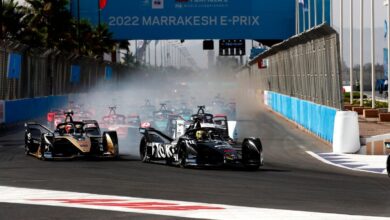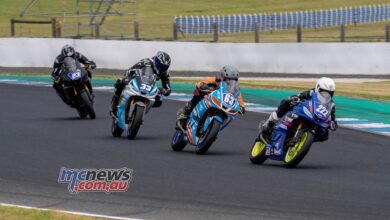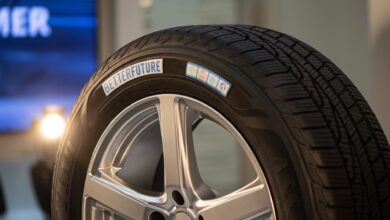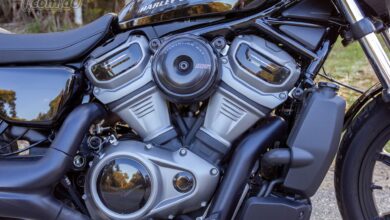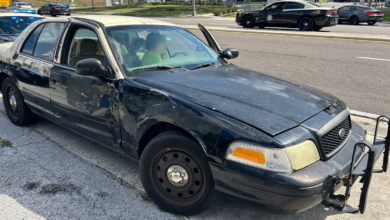MotoGP Preview of the Qatar GP: Politics, Track Time, & A Lack of Setup

From time to time, when I stray from talking about motorcycle racing to share something political on Twitter, I am told by some random Twitter user to “stick to bikes”.
What they mean, of course, is that I should not share political opinions or articles they do not agree with, but that’s a different question.
Talking about politics is, of course, still “sticking to bikes.” Circuits have to be built somewhere.
That requires obtaining permission to start construction from some level of government. They have to be funded, with money often being either supplied or backed by some level of government. They need roads to access them: built by government.
A race track has to have a hospital with specialized medical facilities for treating severely injured riders within 20 minutes by helicopter or 45 minutes by road: in most countries, hospitals are built by governments.
Race tracks are subject to noise regulations (government), environmental regulations (government), and MotoGP races generate a large amount of economic activity, an estimated €60 million for the region surrounding a race track over the week or so an event is held.
All this economic activity generates tax revenue, in sales and business tax: government.
Life Is Politics
Racing is inherently political. But that makes it no different to any other aspect of human life. Humans are social animals, and people living in groups inherently require some form of political organization, in whatever form it may take. Politics is unavoidable.
The past week or so has brought that into stark relief. Russia’s invasion of Ukraine has transformed the world more than anyone could have expected. Russia has made itself into a pariah state, excluded from the political and economic life of the world.
That has extended to sporting activities, with F1, FIFA, and a host of other sports excluding Russian teams and athletes from competing.
The Russian invasion of Ukraine is not so much the elephant in the room as a blue whale in a phone box: so big, so beyond the normal order of the world, so outrageous, that even the most die-hard sports fan can’t ignore it, no matter how much they would like to.
Labor Violations
It is perversely appropriate, in that case, that MotoGP should be kicking off the 2022 season at Qatar.
Choosing where MotoGP rounds are held is also a political choice. Every nation has terrible actions in its past for which it should be ashamed. But most of the countries hosting MotoGP races have left such history behind them. In Qatar, however, those abuses are all too current.
The country is preparing to host the FIFA World Cup in stadiums built by workers often living in some form of indentured servitude, and occasionally close to open slavery, under the Kafala system for foreign workers.
Their working and living conditions were often horrendous, with over 6,500 foreign workers dying in construction projects to prepare for the World Cup. 37 workers died building the stadiums where the World Cup matches are due to take place.
On Wednesday, Fabio Quartararo, Pecco Bagnaia, and Joan Mir visited one of those stadiums, the Lusail Iconic Stadium.
They had no choice, of course (riders are obliged to make an appearance at promotional events at the start of a race weekend, with the riders chosen by Dorna).
Riders promote the event, at a location chosen by the circuit, and organized by the series promoter. All of these are political decisions.
Getting Away from It All
Sport is also escapism, of course. A chance to not have to think about the horrors of the world (and there are always horrors to be found in the world somewhere). So we should not feel bad about preparing to enjoy a weekend of MotoGP.
As a brutal dictator pushes into Ukraine, and tries to intimidate the rest of the world into accepting his will, ignoring him and enjoying the racing seems like a good way to demonstrate he has failed in his objective. A very small victory, perhaps, and little comfort to his victims in Ukraine. But a victory nonetheless.
There was at least a nod to current events in Qatar. The traditional grid photo, where all 24 MotoGP riders sat on their bikes, came with a caption “United For Peace”. Very carefully on the fence, and better than nothing, but only just.
The riders tiptoed around the subject as well. “We are touching a really hard and difficult situation,” Andrea Dovizioso said. “It’s difficult to answer, as you know. And I’m not in a situation or the position to say something about that.”
“It’s very bad what’s going on. But we can’t take a decision about that. I’m in a difficult position, it’s very difficult to answer, sorry.” Others made statements along the same lines.
On the one hand, you might hope for a stronger response from riders about a very important subject.
But on the other, most of them live their lives so focused on their sport, so single-mindedly devoted to preparing to go racing, doing their utmost to avoid distraction, that many are often so ignorant of situations that they are not really qualified to offer an informed opinion.
What they are experts on is racing, of course. And racing is going to finally happen on Sunday. Under circumstances quite different from the past.
Ever since the Qatar round became a night race, it has walked a tightrope between finding track time in the dark and stopping before the nightly dew settled on the track and rendered it treacherous.
Many approaches have been tried, from spreading the event over four days instead of three, to moving the start time of practice and the race to earlier in the evening.
This has become a bigger factor as the season starts ever earlier: conditions in April are significantly different to early March. So the start time for the MotoGP race has over the years gone from 10pm local time to 8pm local time last year.
For 2022, however, MotoGP has made a major change: this year, the MotoGP race will start at 6pm Doha time. That is just 22 minutes after sunset, right in the middle of twilight. The photographers will love it – their photos will cover the transition from auburn skies to the pop of racing liveries under the floodlights at Qatar.
Riders, however, are more divided. “It is something that the riders have been requesting, to anticipate the times because Qatar can be a little cold when we race,” Miguel Oliveira said, a proponent of the change.
Higher track and air temperatures pretty much eliminate the risk of dew forming, and robbing the track of grip.
No Setup
The compromise, though, is that the early sessions are rendered pretty much meaningless. FP1 is from 1:40pm to 2:25pm.
That is right in the hottest part of the day, when the track is greasy and the sun has raised the track temperatures far above what they are during the race and qualifying.
And that’s leaving aside the fact that the track is going to be dusty and dirty until it’s had a day of 80+ bikes running around cleaning it.
“I think it’s going to be a busy weekend. I think we have to be especially focused every time we hit the track because the track time is so limited,” Jack Miller told us. “I think it’s definitely different because we’re only going to have FP2 and FP2 at night to prepare for the race.”
“That’s it. And FP2 is going to be qualifying pretty much, from halfway or three-quarters of the way through.” Conditions in FP3 are going to be way too hot for anyone to improve their time from FP2, so FP2 will set Q1 and Q2.
There really isn’t going to be much time to find a bike setup that works. Most of FP2 will be spent chasing a spot in Q2, even more imperative now that the field is so incredibly close.
And FP4, normally the time for figuring out which tire will last the race, and what setup will get the best performance out of it, starts at 5:20pm, while the sun is still blazing and the track is still hot, and lasts until a few minutes after sunset. Its utility is questionable at best.
Add to that the fact that this year, there hasn’t been a test at Qatar. In previous seasons, there has usually been at least one test at Qatar, and sometimes two. That meant that by the time everyone lined up on the grid on Sunday for the race, it was pretty clear who had the best shot at winning.
This year, the riders have been to Sepang and Mandalika in Indonesia to prepare for 2022. They haven’t had the time to refine their bikes for the Lusail International Circuit.
Going in Blind
“I think it’ll be different for sure,” Jack Miller said. “As we saw last year we had five days of testing here prior to two race weekends and in the second race weekend we had the closest top 15 in history. I think there’s no coincidence in that. So I don’t expect the same sort of results here as last year.”
If there is so little time to prepare the bikes for the track, then the advantage will likely go to the bikes which are already best prepared during testing. Ironically, that might favor the Yamaha.
At Mandalika, Fabio Quartararo complained that he was already at the limit of the M1’s potential.
At Qatar, that may work to his advantage, with the bike ready to hit the race track. For a bike like the Honda, which is completely new for 2022, they might need a little more time to find a setting which works.
Despite the fact that the Yamaha has the lowest top speed on the grid, the M1 has had remarkable success at the Lusail circuit. A Yamaha has won 10 of the 18 races held at the track, twice as many as Ducati’s 5 and three times more than Honda’s 3.
More relevantly, Yamahas won both of the races held in 2021, with Maverick Viñales taking victory in the first race of the season, Fabio Quartararo winning the second round a week later.
How does such a slow bike win on such a fast track? (Reminder: Johann Zarco hit a mind-melting 362.4 km/h during practice last year). Sure, Lusail has a long front straight – over a kilometer, with a reasonably fast right hander to start.
But between the start and end of the straight, the track is one long flowing collection of 16 corners, of various styles and tightness. The circuit favors a bike which can carry corner speed and get drive out of turns.
Top speed is nice, but as long as a Yamaha can stay in the slipstream of a much faster bike, it can use its strong braking and great agility to get past and then open a gap before the front straight.
The Yamahas do have to be close, though. If they can’t get past at Turn 6, the tight left at the end of the first of Qatar’s three ‘fingers’, then there probably aren’t enough corners to create the gap needed to fend off the attack which faster bikes will inevitably launch at the end of the front straight. Turn 6 is where the race is so often won, though not usually on the final lap.
Though Fabio Quartararo probably starts the race as the favorite to win, the Ducatis may have a trick up their sleeve after all.
For the eagle-eyed, that was clear from the bikes on the grid: the position of the torque back pressure valve on the exhaust is further forward on the old bike, and the top exhaust pipe is a very slightly different shape.
The decision came after Pecco Bagnaia felt more comfortable with the old engine rather than the new one.
The new engine had more power, but the throttle response was not as predictable as the 2021 engine. It may have been possible to iron most of that out with more testing, but Bagnaia was more concerned with giving himself the best chance of winning the 2022 title.
Bagnaia’s preference means Jack Miller will also have to switch back to the 2021 engine. The rules say that both riders in a factory team have to use the same engine specification.
With Bagnaia having come closest to winning the title in 2021, Ducati have chosen to follow his preference for both riders.
So the development burden will shift to the Pramac Ducati team and Luca Marini in the Mooney VR46 squad.
That is not uncommon: Ducati developed its holeshot and ride-height devices in the Pramac team, only passing them on to the factory team once they had proven their worth.
That is the benefit of having a ‘junior’ team like Pramac, being able to use them as a test bed without risking the factory riders’ shot at the title.
Deep Data
The benefit of using the 2021 engine is that Ducati have a pretty good understanding of the performance of the motor. They understand how to get the best out of it, and how to set up the electronics on the bike. There will be no nasty surprises.
Without a new engine, the GP22 has only a fairing and its front ride-height device as new components.
The chassis is pretty much the same as last year’s, so the factory Ducati team will only have to work out how to get the best out of the 2022 aero package and how to optimize the front ride-height device.
At a track with a long front straight like Qatar, the new device could be a huge advantage.
But they may not have that advantage for long. Italian website Corsedimoto.com, subsidiary of the sports daily Gazzetta dello Sport, has a report confirming earlier rumors that front-ride height devices are about to be banned.
The request to ban the devices has come from the manufacturers’ association, the MSMA. Or at least, five of the six manufacturers, with no prizes for guessing which was the odd manufacturer out.
The issue is that MSMA decisions have to be unanimous for any change to be adopted automatically by the Grand Prix Commission, MotoGP’s rule-making body. But neither the FIM, Dorna, nor IRTA would oppose a ban.
According to Corsedimoto, the debate inside the MSMA is over whether the ban will take effect in 2023 or 2024, as Ducati prefers.
The reason given is to reduce the cost of development for a technology that is not seen as being transferrable to road bikes (though the lessons from bike dynamics can be applied to many road bikes that feature electronic suspension systems capable of adjusting preload on the fly).
The ban would also help to reduce top speeds, a priority of Dorna and the FIM as the speeds continue to climb.
The front ride-height device lowers the front of the bike, in addition to the rear, lowering the entire center of mass on corner exit. That allows the bike to accelerate harder, which automatically results in a higher top speed.
Higher top speeds require more run off at the end of straights, which is growing more and more difficult to achieve at some tracks.
Predictable Balance
In Thursday’s press conference, all six manufacturers were represented by one rider. And naturally, five were against ride-height devices, and one in favor.
“For me, I have to press a button. So for me it’s not a problem,” Pecco Bagnaia replied when asked if ride-height devices were making the start procedure too complicated.
Everyone else disagreed. “For me, it’s starting to be too much,” Fabio Quartararo said. “For me, in 2019, just the starting procedure was, you arrive in neutral, press the launch control button and just go. Now you need to check too many things, and I think at the end, yes, you win, but for me it’s starting to be too much.”
Joan Mir sided with the world champion. “For me, I’m with Fabio. I think that it’s starting to be too much.” The Suzuki rider pointed to the top speeds being achieved. “Every time we arrive faster onto the straight, we will reach 370 km/h soon.”
“The layouts are the same, and for sure it’s more performance. Also on the acceleration side, it’s more difficult to make a difference. If you use it, everything is much easier of course, but probably it’s not the best thing for the safety.”
Marc Marquez, now one of the veterans of the field, was for a ban of holeshot devices both front and rear. “For me, it’s something that they must remove in the future,” the Repsol Honda rider said. The riders would only have the power to influence a decision if they worked together.
“I already said last year when I arrived here after my injury, but I think all the riders, we need to go together. Because manufacturers always go more, more, more, and more, and now with the holeshot, more stroke on the rear, more speed, more stroke on the front, even difficult to engage on the start procedure. So for me, for the show, we don’t gain nothing.”
Marquez felt the technology was unnecessary. “OK, it’s a prototype bike, but for street bikes, it’s not necessary, the holeshot.” That was difference to the wings, though.
“The aerodynamics, I agreed, because aerodynamics are always nice, and it’s a new thing. But all the holeshot systems, run off areas we are always trying to increase, now we are arriving faster on the brake point, now we are braking later, because with the holeshot we can brake later. So for the future, it makes no sense.”
Maverick Viñales felt that while the front devices should be banned, the rear ride-height device could actually make riding safer. “I think on the acceleration, it’s much safer with the holeshot,” the Aprilia rider said. The ride-height device helped reduce wheelie, which in turn gave more control over the front end in some corners.
“I remember some times, corners like the last one in Austin where you accelerate from zero, the wall is very close, and with the device, the front is always much more getting the contact on the ground. Now, it’s going too far, too many things, but however, I think at least the rear, for the start and for the acceleration, I think it’s much safer.”
For KTM, Brad Binder sounded a note of realism. “I think it’s the reality now, everyone’s got them. And sure, when you arrive at the grid, you’ve got more to do, it’s always important for me to try not to mess that part up. But the reality is that it’s here and I think it’s here to stay. So I think every manufacturer just needs to make the best of it.”
Will Qatar end up as a straight battle between the Yamaha and the Ducati? Despite the fact that the Honda is brand new, it has been so good right off the bat that it could be competitive even without much time for setup. The bike has rear grip, which is what was missing, and could help all of the Honda riders be more competitive.
The Suzuki could end up being an interesting test case. So far, Suzuki have yet to score a podium at the Qatar track, though they finished fourth in the last three editions.
They have been close though: Alex Rins finished under half a second behind the winner, Andrea Dovizioso, in 2019, and half a second behind second place in Qatar 2 last year. Joan Mir came within two tenths of second in Qatar 1 in 2021.
The bike is stronger than last year, with more engine and pretty solid top speeds. The new ride-height device is much better than last year’s, though it is still manually operated on corner exit like the Yamaha, rather than automatically triggered like the devices reportedly used by the other four manufacturers.
Both Joan Mir and Alex Rins are in better shape than they have been, more focused and determined, which bodes well for the weekend and the season.
Wild Card Weekend?
Perhaps the most interesting prospect is the Aprilia. The RS-GP is much lighter and narrower than last year’s bike, the chassis having undergone a radical transformation. It is much more agile, but because so much has changed, maximizing performance at every track still needs to be figured out.
“To be realistic, still I think we need to wait a little bit, we need to improve,” Maverick Viñales told the press conference. “As I said in the previous test, we still need a few tenths to be ready, to fight in the top positions. But however, we are doing a good job, we are taking the necessary steps, step by step.”
It was too early to think about winning, Viñales believed. “I think we have to be calm. To win a race in MotoGP, you have to put a lot of points together, and I don’t think we are still ready to do it.” But surprises do happen, he said.
“But sometimes MotoGP is quite crazy, you can have a good night and you can do it. But we need to keep working.” Perhaps a weekend with 20 minutes of practice before qualifying and the race might just turn out to be crazy enough for the Aprilia to succeed.
We will know soon enough, of course. In a few hours, bikes will take to the track again, and for a few hours this weekend, we can try to forget about the horrors unfolding in Ukraine.
After two long years of a pandemic, and war breaking out, a bit of light relief is more than welcome. Once the race is over, we can start to think of the plight of the Ukrainians once again.
Photo: MotoGP
